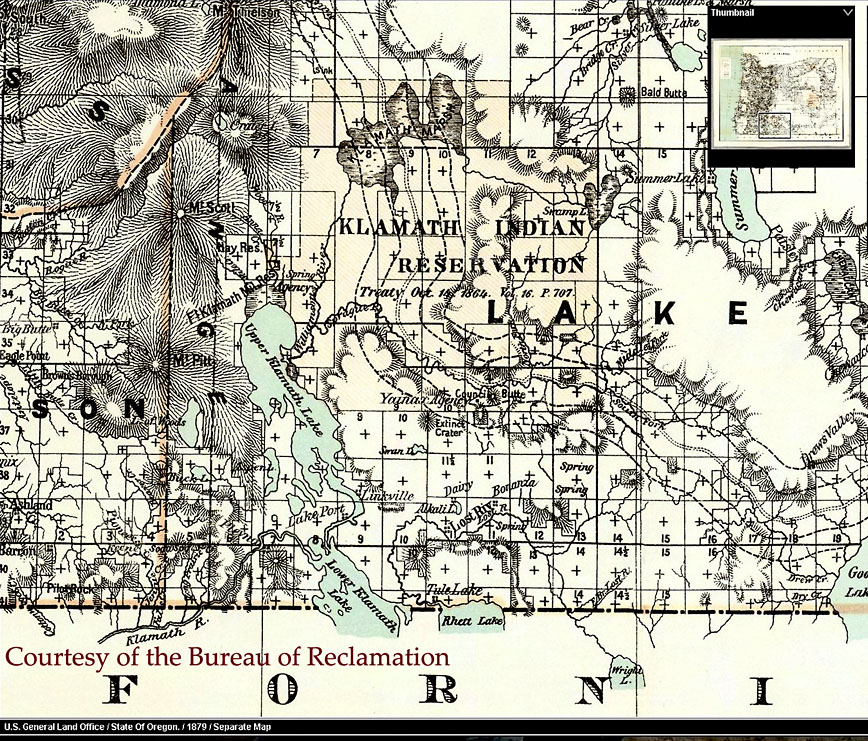Overview
Termination and Restoration in Oregon, by Donald Fixico
Of the federal-Indian policies introduced to American Indians, termination of trust relations in the 1950s was arguably the most dangerous for Native peoples. On a case-by-case basis, termination threatened to end the trust relationship the U.S. government had with tribes, bands, communities, and individuals who possessed trust lands or properties, thereby giving Indians the same status as all other American citizens. It meant that they owned land or property without the federal protective responsibilities that were guaranteed them in the 374 United States-Indian treaties that were negotiated and ratified between 1778 and 1871. Termination stripped Indians of their identity, a part of the process to assimilate them into the mainstream American culture. Read the entire entry here
Content Standards
- HS.55 Analyze the complexity of the interaction of multiple perspectives to investigate causes and effects of significant events in the development of world, U.S., and Oregon history.
- HS.60 Analyze the history, culture, tribal sovereignty, and historical and current issues of the American Indian/Alaska Native/Native Hawaiian in Oregon and the United States.
- HS.61 Analyze and explain persistent historical, social and political issues, conflicts and compromises in regards to power, inequality and justice and their connections to current events and movements.
- HS.63 Identify and analyze ethnic groups (including individuals who are American Indian/Alaska Native/Native Hawaiian or Americans of African, Asian, Pacific Island, Chicano, Latino, or Middle Eastern descent), religious groups, and other traditionally marginalized groups (women, people with disabilities, immigrants, refugees, and individuals who are lesbian, gay, bisexual, or transgender), their relevant historic and current contributions to Oregon the United States, and the world.
- HS.65 Identify and analyze the nature of systemic oppression on ethnic and religious groups, as well as other traditionally marginalized groups, in the pursuit of justice and equality in Oregon, the United States and the world.
- HS.66 Examine and analyze the multiple perspectives and contributions of ethnic and religious groups, as well as traditionally marginalized groups within a dominant society and how different values and views shape Oregon, the United States, and the world.
- HS.67 Evaluate historical sources for perspective, limitations, accuracy, and historical context.
- HS.68 Select and analyze historical information, including contradictory evidence, from a variety of primary and secondary sources to support or reject a claim.
- HS.69 Create and defend a historical argument utilizing primary and secondary sources as evidence.
- HS.70 Identify and critique how the perspective of contemporary thinking influences our view of history.
Additional Sources
Oregon Encyclopedia Entries
Edison Chiloquin, by Lee Juillerat
Confederated Tribes of Grand Ronde, by David Lewis
Crisis in the Klamath Basin (documentary film), by Laura Jane Gifford
Kathryn Harrison, by Kristine Olson
Urban Indians in Oregon with Timeline of Federal Indian Policies, by Claudia Welala Long
Articles and Books
Beck, David R. M. “Standing Out Here in the Surf’: The Termination and Restoration of the Coos, Lower Umpqua and Siuslaw Indians of Western Oregon in Historical Perspective.” Oregon Historical Quarterly 110, no.1 (2009): pp. 6-37.
Fixico, Donald L. Termination and Relocation: Federal Indian Policy, 1945-1960. Albuquerque: University of New Mexico Press, 1986.
Hancock, Christin. “Health and Well-being: Federal Indian Policy, Klamath Women, and Childbirth.” Oregon Historical Quarterly 117, no.2 (2016): pp. 166-197. Click here to download a free PDF of this article
Haynal, Patrick. “Termination and Tribal Survival: The Klamath Tribes of Oregon.” Oregon Historical Quarterly 101, no.3 (2000): pp. 270-301.
Lewis, David G. “Four Deaths: The Near Destruction of Western Oregon Tribes and Native Lifeways, Removal to the Reservation, and Erasure from History.” Oregon Historical Quarterly 115, no.3 (2014): pp. 424-447. Click here to download a free PDF of this article
Oregon Public Broadcasting Oregon Experience Documentaries
Broken Treaties, An Oregon Experience
Online Presentations
Additional Lesson Plans
Cite
The OE Staff. Termination and Restoration in Oregon. 2021. Retrieved from The Oregon Encyclopedia, https://www.oregonencyclopedia.org/packets/10. (Accessed April 16, 2025.)Teacher Guide
-
Make sure students have a basic understanding of the following terms and concepts including: Time Immemorial; Sovereignty; Lifeways; Treaties; Termination & Restoration. See Tribal History Shared History: Essential Understandings of Native Americans in Oregon for reference.
-
Read Document #1. News Editorial, Indian Treaties. What reasons do the editors of The Oregonian make for abolishing the treaty system in the United States? What language do they use to describe Native Americans?
-
Examine the following maps. #2. Klamath Indian Reservation and #3. Siletz Indian Reservation. How did the Klamath Treaty protect tribal lands, government services, and resources? What happened to Klamath lands, services, and resources after termination of the tribe? How does this question play out differently with the Siletz Reservation? How does the EuroAmerican view of private property and land ownership differ from tribal views?
-
Read Document #4. News Article, Klamath Indians Draw Spotlight. Does the writer offer a balanced view of the topic? What pros and cons does the article cite for Klamath Indians to terminate their relationship with the federal government? Read the related headnotes for the photo #5. Klamath Tribal Council, 1955 and documents #6. A New Status for the American Indian and #7. Winema National Forest to support your answers.
-
Why did Oregon’s terminated tribes fight for tribal restoration? What did they gain by restoration? What was lost and could not be restored? Read the headnote for Document #8.Grand Ronde Restoration Hearing for answers.
-
Why do you think the U.S. federal government was in favor of Native American tribal termination? Provide some examples of how tribes or tribal members responded to termination practices. Read the related OE entries in the Additional Sources section of this packet for more information.
-
How do some of Oregon’s federally recognized Native American tribes view termination and restoration? Visit the following tribal history websites to begin your research:
Confederated Tribes of Coos, Lower Umpqua & Siuslaw
Confederated Tribes of Grand Ronde
Confederated Tribes of Siletz Indians

